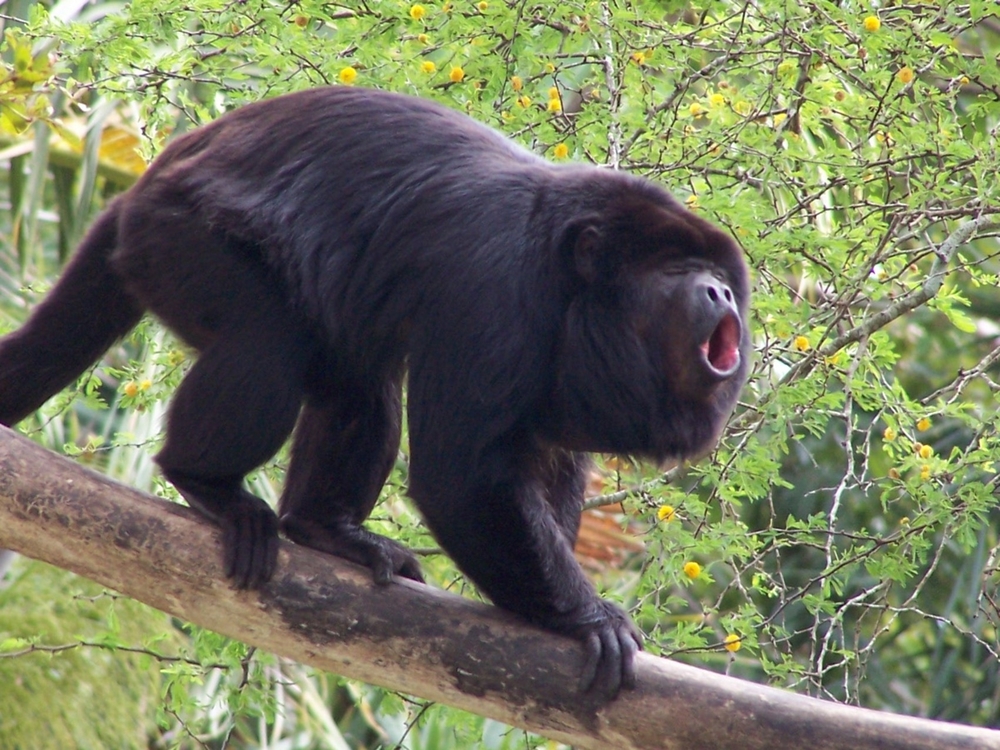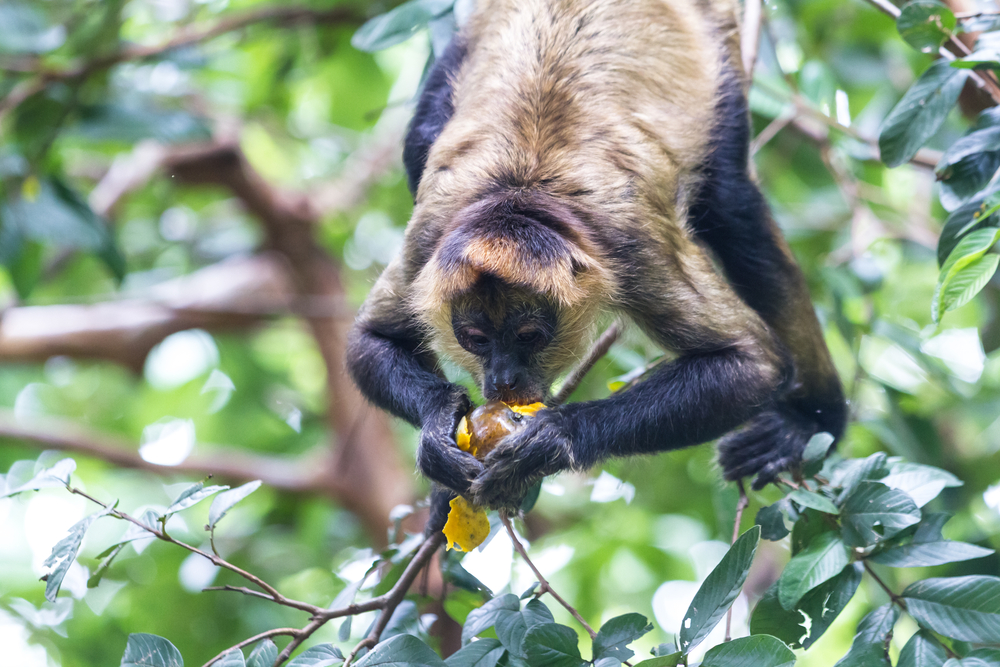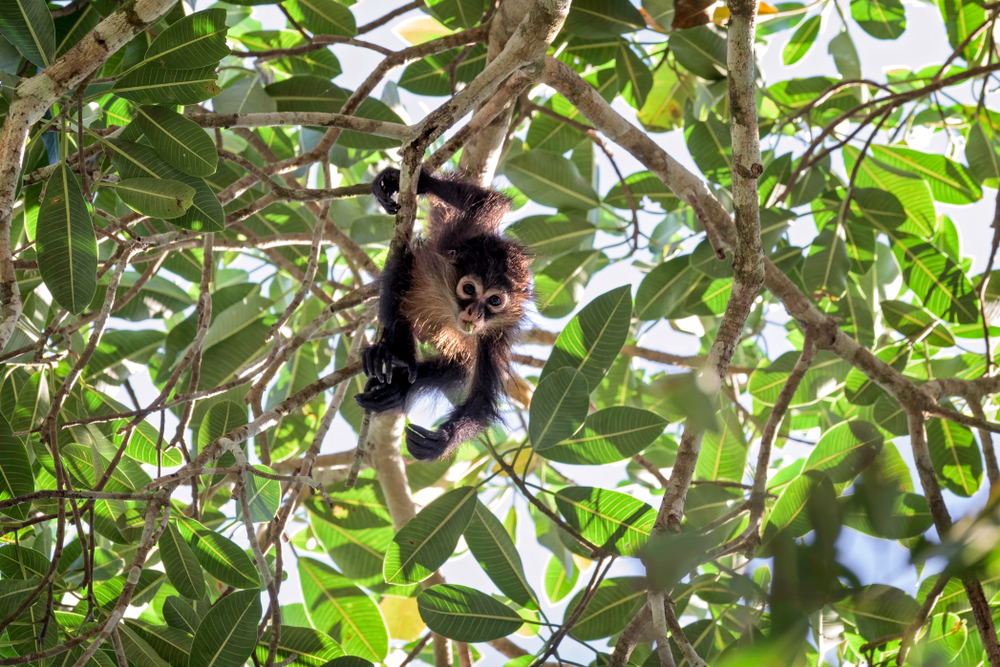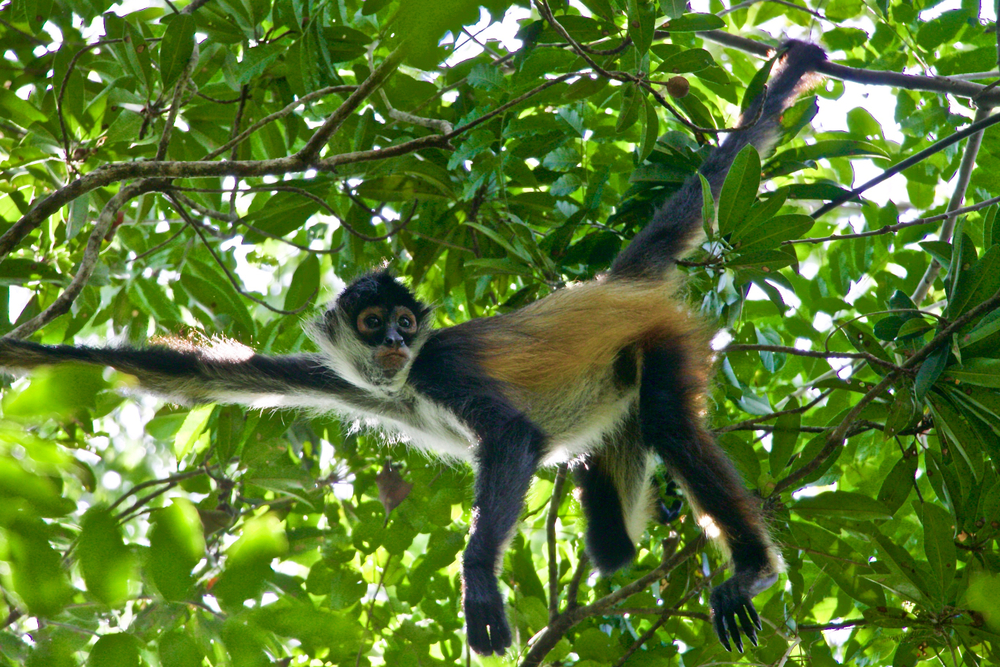About
#Mammals
#Primate
The spider monkey, classified under the genus Ateles, is a captivating and highly specialized primate species residing within the Animal Kingdom, class Mammalia, and order Primates. Known for their unique appearance and remarkable adaptations, spider monkeys are native to the lush rainforests of Central and South America.
One of the spider monkey’s most distinctive features is its extraordinarily long, slender limbs and prehensile tail, which can be as long as its body. This tail acts as a fifth limb, allowing spider monkeys to swing gracefully from tree to tree, earning them their name due to their spider-like movements in the treetops.
Spider monkeys are medium to large-sized primates with hairless faces and expressive eyes. Their fur varies in color among species, ranging from black to brown, and they often have a contrasting lighter patch on their foreheads.
These primates are highly arboreal, spending nearly all of their lives in the trees of tropical rainforests. Their diet primarily consists of fruits, leaves, flowers, and occasionally insects. Their specialized adaptations, such as a large gut to digest fibrous plant material and their remarkable agility in the treetops, make them efficient foragers.
Spider monkeys exhibit complex social behaviors, living in communities of varying sizes, often led by a dominant female. Their intricate social structures involve grooming, vocalizations, and alliances within the group.
Conservation Concerns
Spider Monkeys face significant conservation threats, primarily due to habitat loss and fragmentation caused by deforestation and human activities such as logging and agriculture. The fragmentation of their habitat restricts their movement and access to resources, leading to population declines.
Additionally, Spider Monkeys are hunted for bushmeat and captured for the illegal pet trade, further impacting their populations. Climate change also poses a threat, altering the availability of their preferred food sources and disrupting their natural habitats.
As a result of these threats, Spider Monkey populations are declining across their range. The IUCN Red List categorizes several species of Spider Monkeys as either “Vulnerable” or “Endangered.”
Threatened:
Extinct
Critically Endangered
Endangered
Vulnerable
Near Threatened
Least Concern




















































































